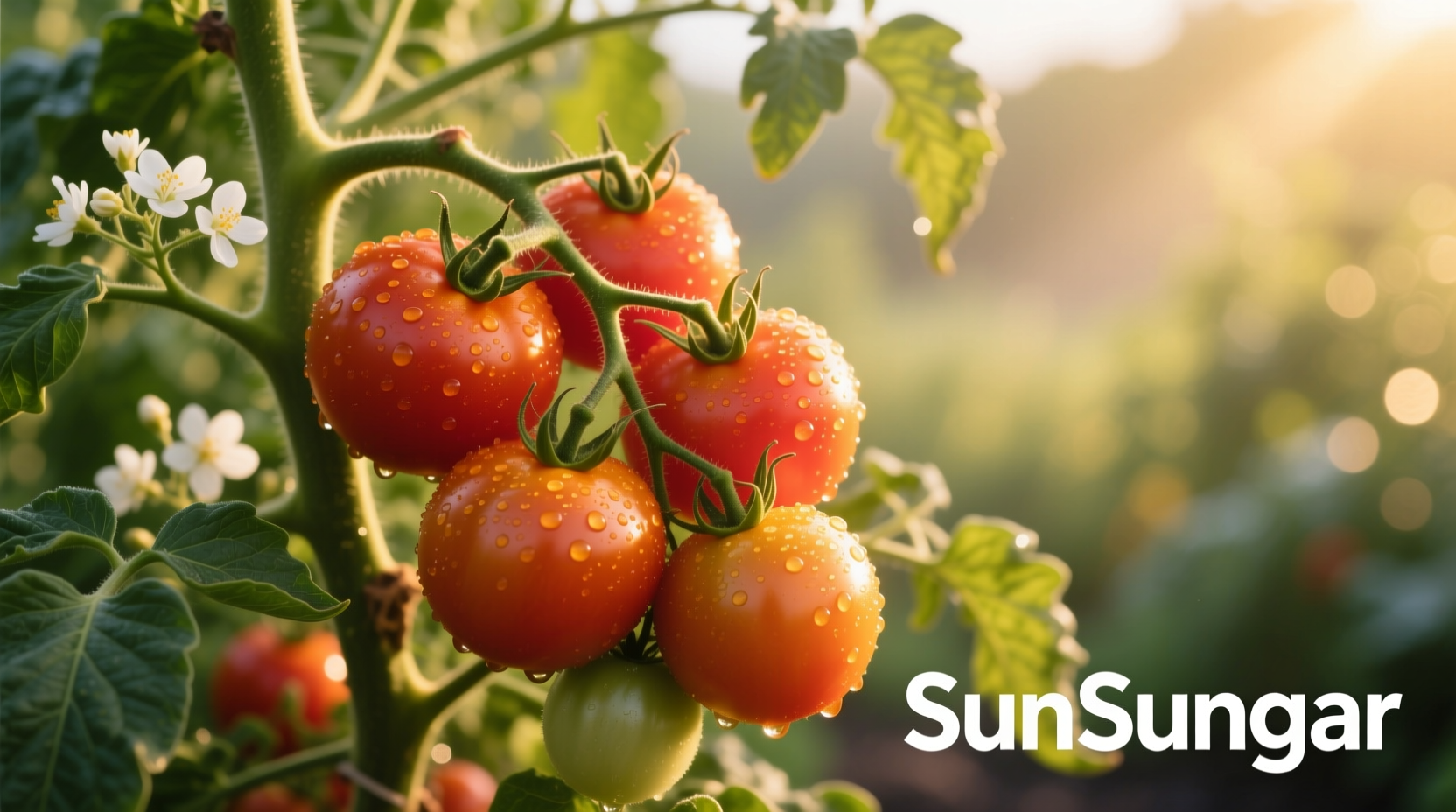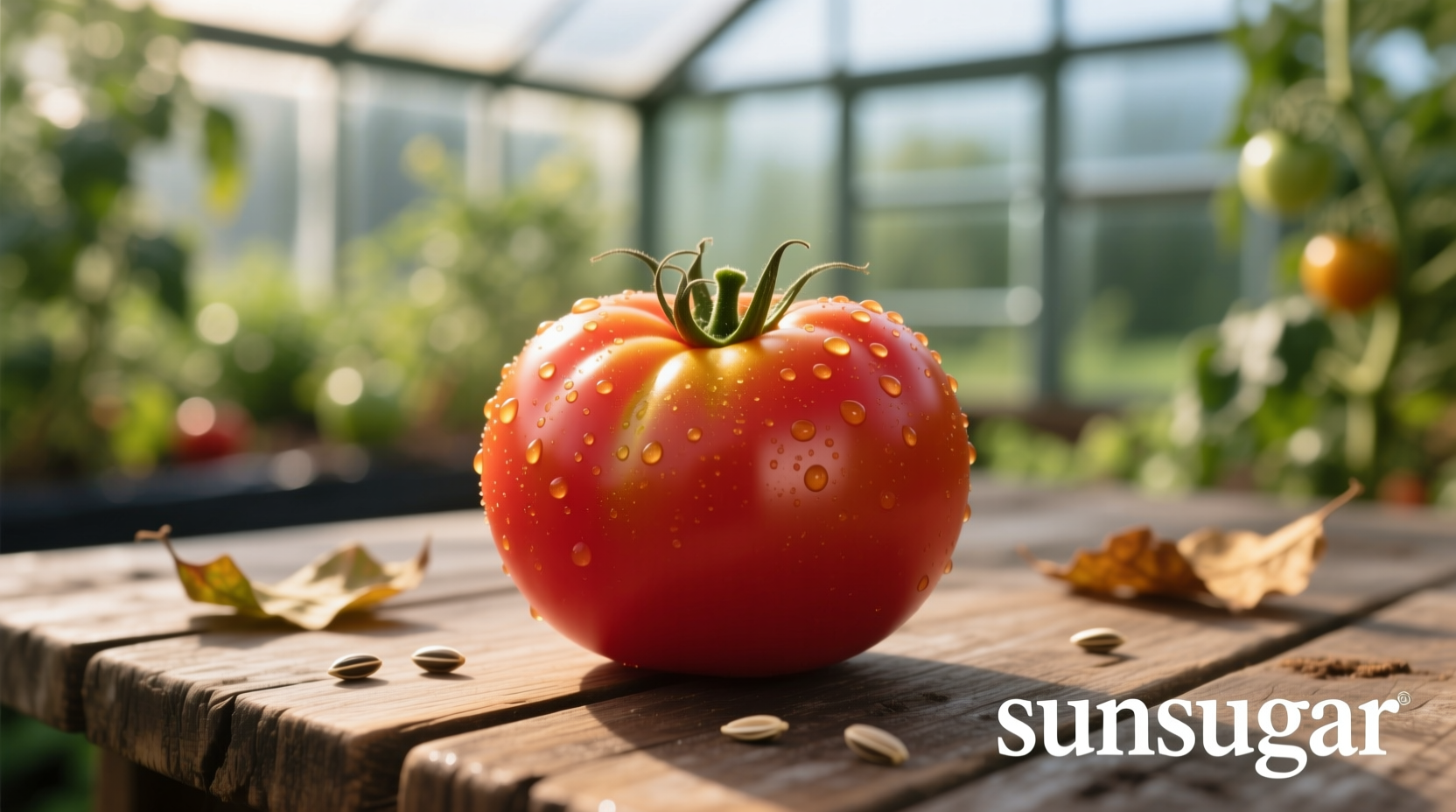Discover why SunSugar tomatoes have become the favorite among home gardeners and professional chefs alike. This comprehensive guide reveals everything you need to know about growing, harvesting, and using these exceptionally sweet orange gems to elevate your culinary creations and garden productivity.
What Makes SunSugar Tomatoes Stand Out
When you bite into a SunSugar tomato, you'll immediately notice its remarkable sweetness balanced with complex flavor notes. Unlike standard cherry tomatoes that often prioritize appearance over taste, SunSugar delivers on both fronts. Developed through careful hybridization, these tomatoes consistently achieve Brix levels between 10-12, significantly higher than the 4-6 range of typical supermarket tomatoes.
According to research from the University of California's Agricultural and Natural Resources department, tomato sweetness directly correlates with consumer satisfaction, making SunSugar's exceptional sugar content a major advantage for home growers.

Growing SunSugar Tomatoes Successfully
Whether you're a beginner gardener or experienced grower, SunSugar tomatoes offer reliable performance with proper care. These determinate plants reach 4-6 feet in height and produce abundant clusters of 1-inch orange tomatoes throughout the growing season.
Essential Growing Conditions
SunSugar tomatoes thrive in full sun (6-8 hours daily) with well-draining soil enriched with organic matter. They perform best in temperatures between 70-85°F (21-29°C) and require consistent moisture without waterlogging.
| Growing Factor | Optimal Condition | Problem Signs |
|---|---|---|
| Soil pH | 6.2-6.8 | Yellowing leaves, poor fruit set |
| Watering | 1-2 inches weekly, consistent | Blossom end rot, cracking fruit |
| Fertilization | Balanced formula, reduced nitrogen at fruiting | Excessive foliage, few fruits |
| Spacing | 18-24 inches between plants | Fungal diseases, poor air circulation |
One key advantage of SunSugar tomatoes is their disease resistance package, including protection against Fusarium wilt (races 1 & 2), Verticillium wilt, and Tomato Spotted Wilt Virus. This makes them particularly valuable for gardeners in regions where these soil-borne pathogens are common.
Harvesting and Storage Techniques
Timing your harvest correctly ensures maximum sweetness and flavor. SunSugar tomatoes reach peak ripeness when they develop their characteristic golden-orange color with a slight give when gently squeezed. Unlike red tomatoes, they won't continue ripening significantly after picking, so harvest at full color development.
For best storage results, keep harvested SunSugar tomatoes at room temperature away from direct sunlight. Refrigeration below 55°F (13°C) damages their flavor compounds and texture. When stored properly, they maintain quality for 5-7 days.
Culinary Applications for SunSugar Tomatoes
The exceptional sweetness of SunSugar tomatoes makes them versatile in the kitchen. Their thin skin and minimal seeds create a luxurious eating experience that enhances both simple and sophisticated dishes.
- Raw preparations: Toss whole in salads, skewer for appetizers, or serve as a standalone snack
- Cooked applications: Roast to concentrate sweetness, blend into sauces, or incorporate into salsas
- Preservation: Excellent for dehydrating into tomato leather or making sun-dried style tomatoes
Professional chefs particularly value SunSugar tomatoes for their consistent size and shape, which creates visually appealing presentations. Their high sugar content also facilitates beautiful caramelization when roasted, making them ideal for elevated dishes.
How SunSugar Compares to Similar Varieties
While many cherry tomato varieties exist, SunSugar stands apart for specific characteristics that matter to both gardeners and cooks. Understanding these differences helps you select the right variety for your needs.
| Variety | Color | Sweetness (Brix) | Disease Resistance | Best Use |
|---|---|---|---|---|
| SunSugar | Golden-orange | 10-12 | Fusarium, Verticillium, TSWV | All-purpose, fresh eating |
| Sun Gold | Orange | 9-10 | Limited | Fresh eating |
| Black Cherry | Dark red | 8-9 | Basic | Complex flavor dishes |
| Super Sweet 100 | Red | 9-10 | Fusarium, Verticillium | Salads, snacking |
According to a Rutgers New Jersey Agricultural Experiment Station study on tomato varieties, orange tomatoes like SunSugar contain higher levels of beta-carotene than red varieties while maintaining excellent lycopene content, offering nutritional advantages alongside their superior taste.
Regional Growing Considerations
SunSugar tomatoes perform well across multiple growing zones but have specific limitations worth noting. In regions with short growing seasons (USDA zones 3-5), starting seeds indoors 6-8 weeks before last frost ensures sufficient time for maturity. Gardeners in hot climates (zones 9-11) should provide afternoon shade during peak summer heat to prevent blossom drop.
One important limitation: SunSugar tomatoes don't perform well in consistently cool, cloudy conditions. Gardeners in Pacific Northwest climates may experience delayed ripening and reduced sweetness compared to sunnier regions. In these areas, growing in containers that can be moved to maximize sun exposure often yields better results.
Common Questions About SunSugar Tomatoes
As these golden gems have gained popularity, gardeners and cooks have developed several recurring questions about their cultivation and use.











 浙公网安备
33010002000092号
浙公网安备
33010002000092号 浙B2-20120091-4
浙B2-20120091-4